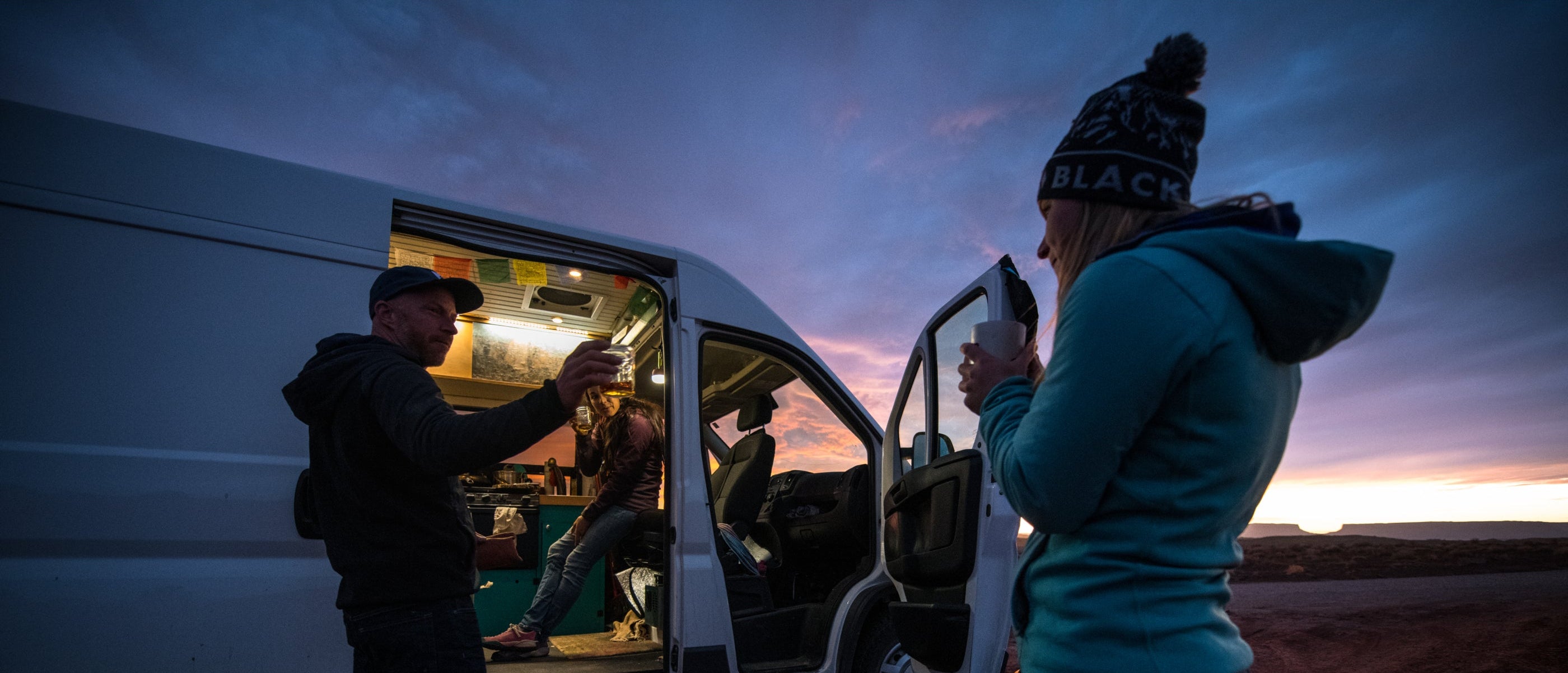
Pack Smarter for a Climbing Trip
Finally, it’s time for the climbing trip you have been planning for months. The camping is booked, the oil in your car has been changed, you have bought all the crag snacks, and your partners are stoked- now all you need to do is pack for the trip. Cross-country climbing trips entail a variety of climbing disciplines; You could be on an epic trad multipitch route one day and try a classic sport crag the next.
Rather than pack your whole gear room, we have compiled a list of what to bring on a climbing trip and what to leave behind, sourced from our own Black Diamond employees.
At any given time of the year, Black Diamond employees are planning or out on a climbing trip; they have perfected the gear list, knowing exactly what to pack and what to leave at home for an epic climbing trip. Here are their top picks.
CHOOSING A PACK
CHOOSING A PACK
Choosing the right pack for your trip is foundational for a successful trip. If you are going on a trip with long approaches, heavy on off-width climbing, you will be upset when you try and fit your wide cams, rope, layers, and snacks in a small 20L pack.
ALL-AROUND CLIMBING PACK
BD Headlamp Designer and granite climbing aficionado Kenny Peterson says the Creek 50 is the one pack to rule them all. The simple, rugged construction and easy-to-load design mean Kenny can think about the send rather than how to pack his gear. The Creek 50 is great for weekend trips down to Indian Creek (the bag's namesake) and shorter approaches where you need to bring a lot of gear and comforts to the crag.
If you prefer clipping bolts or are looking for a smaller cragging bag that still packs a punch, BD Event Coordinator, Brenna King, recommends the Crag 40 pack, “Pack smart and this pack works in basically every context. On a recent trip to Cuba, I brought all my sport climbing gear and a small carry-on and was set for 2 weeks!”
BOULDERING BAG
Terra, local bouldering hard woman and Pro Program Coordinator, favors the Capsule 20 Bouldering Bag stuffed into her Mondo Crash Pad. She likes it “for longer approaches and when most of my time is spent climbing outside,” since the Capsule 20 holds all the essentials, and most importantly, all the necessary snacks that fuel her sending. When she needs to bring an larger backpack to and from the boulders, Terra likes the Stone 45 backpack, “I'm often too lazy to unpack it, it's easy to just take to the gym after a weekend, and it allows me to bring extra stuff like pulley systems, lifting journals, 4 pairs of climbing shoes, athletic shoes, etc.”
ON-ROUTE OR ALPINE PACK
For when your climbing trip takes you to bigger peaks and on longer pitches, a pack that can carry all your gear and be comfortable on route is key. Our Blitz series packs—the Rock Blitz 15, Blitz 20, and Blitz 28—are ultra-durable, lightweight, and packable. Bryson, alpine trad-dad and VP of Digital and Marketing (who has climbed the Grand 25 times), says, “The Blitz 20 is my perfect full-day alpine pack. I can stash a small rack, harness, puffy, and food and water for a nice day in the Tetons and barely notice the pack.”
WHEN YOU TRAVEL WITH A CRAG DOG
For folks who travel to the crag with their dog, having a comfortable place for them to hang while you pull hard is important. The Pipedream Pack stores your gear easily and keeps your gear off the ground, but BD employees have also found it’s the perfect crag dog bed while they work the project.
A friendly reminder, to only bring your dog to the crag if they are ready to behave themselves, and remember to keep them on a leash and pick up their poop so everyone can enjoy the crag.
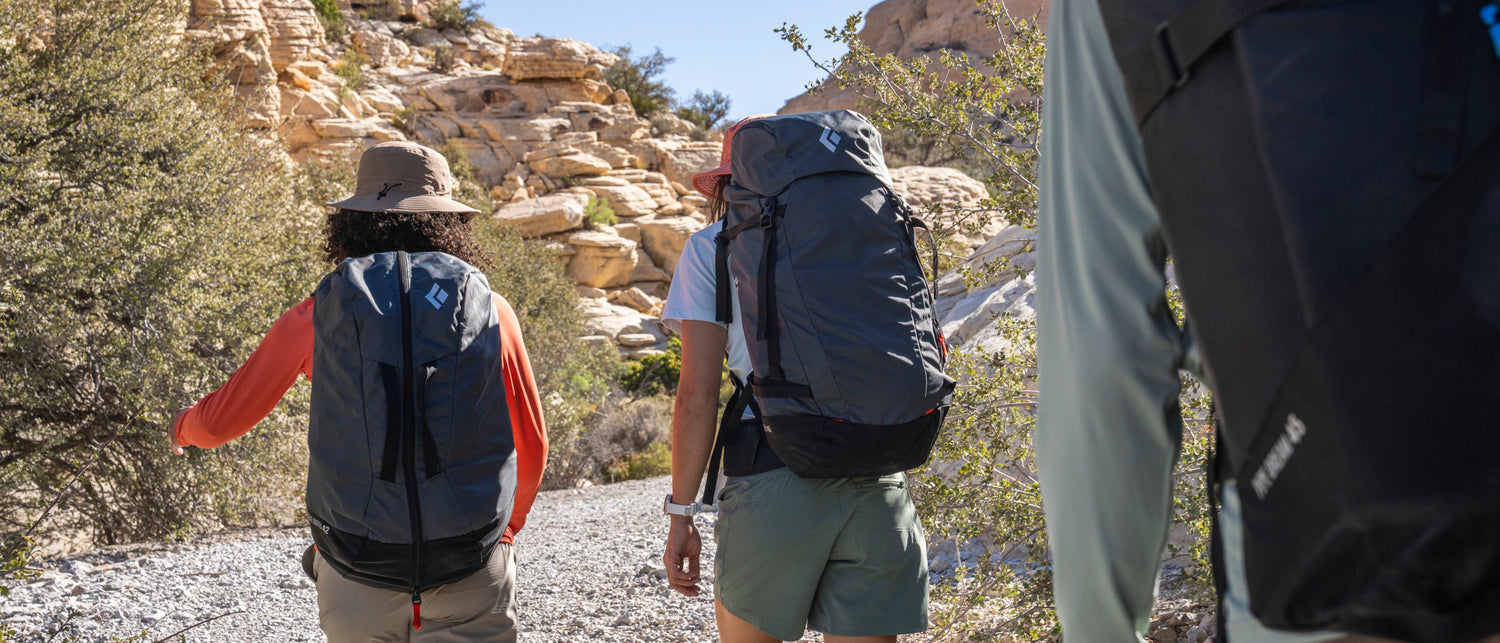
BRING THE RIGHT GEAR
BRING THE RIGHT GEAR
After picking the right pack for your pursuit, you need to fill it with equipment. For trad and sport climbing, the basics you need are obvious: a rope, harness, helmet, chalk, and climbing shoes.
HARDGOODS
When sport climbing, you need a set of quickdraws and maybe a few slings, but when trad climbing, you need more protection; Kenny always grabs a set of Z4 offsets, “a must have for granite climbing - perfect for Yosemite pin scars!” Bryson counters with, "A rack of ultralights - I'll argue with anyone all day that those are the very best products available on the market, balancing weight and performance.” If you want to split the middle, a classic and world-class option is the C4 Camalot, trusted by all BD employees.
CLIMBING SHOES
Generally, for a longer climbing trip, it is a good idea to bring a couple of pairs of climbing shoes. The Aspect Pros are a great option for cruising granite walls and techy slab, while the Method Climbing Shoes are a better option for steep, sport climbs and boulders.
Another advantage to bringing two pairs of climbing shoes is that you have a backup pair in case one pair blows a hole mid-trip or you lose a single shoe down a talus field (it has happened to this author).
HELMETS
Even if you don’t wear a helmet while sport climbing, it is always a good idea to bring a helmet on a climbing trip. The Vapor helmet is an employee favorite, Brenna King says it best, “My Vapor helmet is lightweight and always worth bringing along. It feels like you aren’t wearing anything, looks sleek, and it’s always good to protect your dome!”
Unless you are on a pure bouldering road trip, packing a helmet is always a good idea, and the Vapor helmet is ultralight and easy to pack, but still able to handle the wear and tear of travel (within reason). If you tend to throw your pack around or store your helmet on the outside of your pack, the Vision or Capitan Helmet may be a more durable option.
OTHER GEAR
On a climbing trip, you don’t want to forget the supporting gear that makes the approach easier. A headlamp for the pre-dawn approaches or post-dusk rappels is key. The Spot 400 or Storm 500-R are easy to pack and feature a lock mode to prevent accidentally turning them on. Trekking poles offer support through tricky boulder sections on long approaches when you are carrying a heavy pack deep into the wilderness.
I have been using and love the Crag 40 for years! Pack smart and this pack works in basically every context. On a recent trip to Cuba, I brought all my sport climbing gear and a small carry-on and was set for 2 weeks!
—Brenna King, Events Coordinator
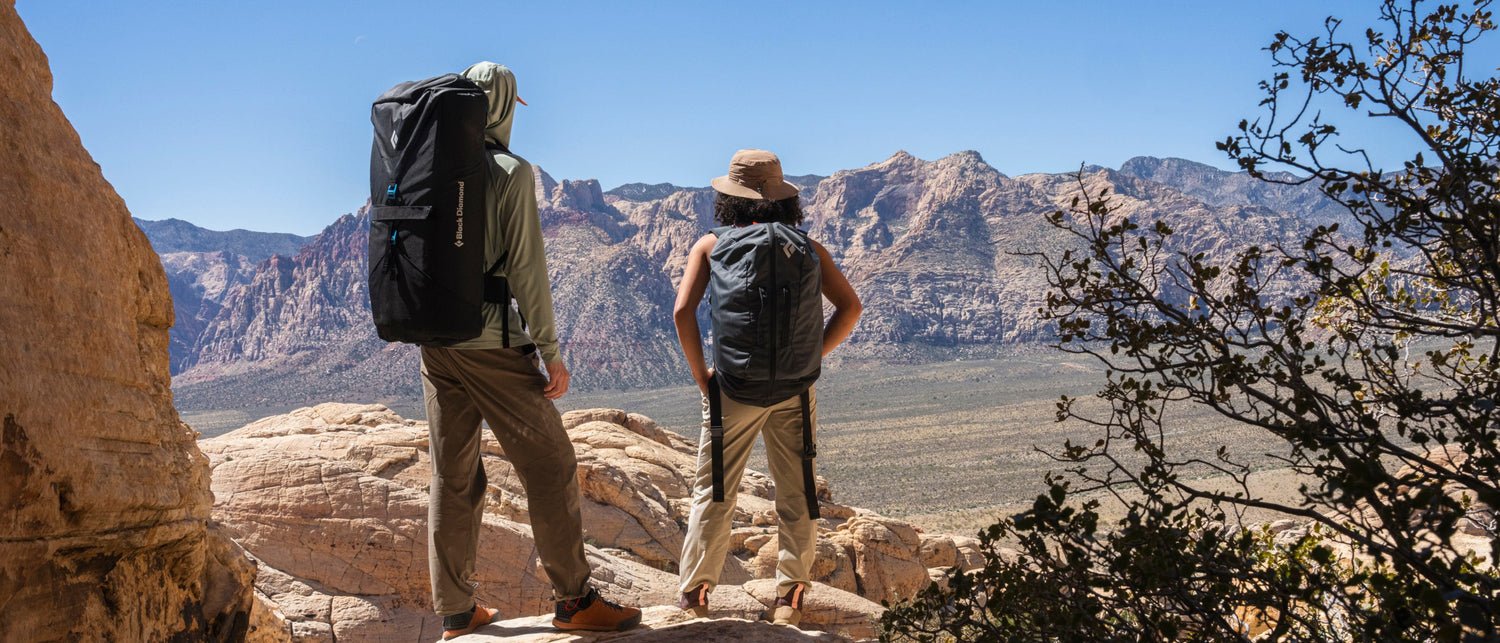
PACK THE RIGHT CLOTHES
PACK THE RIGHT CLOTHES
On a climbing road trip, it is extra important that your clothes work double time. Between bringing the wide gear in case you want to try the long off-width pitch and bringing an extra pair of pants you might not wear, bring the gear instead. Our climbing apparel is designed and tested for the road trip. Here are some options sure to keep you sending.
CLIMBING PANTS
Our line of climbing pants is built for the climbing life- this means they send hard and transition to hanging around camp with ease. We have a whole article on choosing the right pair of pants, you can check out. Bryson chooses the Dogma Pants over everything else: “They’re built like a heavy-duty work pant, but still light and comfortable enough for climbing.” Other employees love the Dirtbag Pants. Both the Dogma and the Dirtbag boast a cotton construction that moves with you and is durable to whatever your road trip adventures entail.
INSULATION
A puffy for your road trip is important. Kenny, Brenna, and Bryson prefer the versatility, packability, and breathability of our down jackets—the Deploy Down 1.0 Hoody and the Access Down 2.0 Hoody. If you don’t exactly know the weather of the location you are climbing, it is hard to go wrong with either the Deploy or Access Down.
Terra prefers the synthetic insulation of the Solution 4.0 Parka. For her, the perfect sending temps are 30-40 degrees in the sun. The Solution 4.0 Parka is highly insulating, “for at camp, between attempts and general coziness.” Since the Solution 4.0 is packed full of synthetic insulation, it does not compress as easily as down, making it a poor option if you need to save space on your road trip. Explore our full lineup of insulated jackets to find the perfect jacket for your trip.
RAIN LAYER
In case of rainy weather on your road trip, which is a given if you are headed to areas like Index or Squamish, packing a rain layer is important. The Fineline Shell is easy to bring and provides reliable protection in the rain. It has features that help you enjoy the forced rest day, whether you're hiking around scouting cliffs or foraging for mushrooms.
When you are headed to an area where rain is unlikely, it is still a good idea to pack a shell in case of an unexpected squall. The Alpine Start Hoody packs down small, weighs little, and deploys easily—it is a staple in the pack of most BD employees.
WHAT TO LEAVE BEHIND
While we have recommended bringing a wide range of climbing gear to maximize sending on your trip, that does not mean you need to bring every piece of gear you own. Generally, it is a good idea to limit the quantities of items you bring on a trip, even if you end up bringing a wide variety of gear.
SPORT CLIMBING
For most sport climbing trips, you only need 12-15 draws and to bring a single rope. We only recommend bringing more draws if the area you are headed to has sport multipitch. Research the height of the cliffs in the area you are climbing to know if you need a 60 or 70m rope. And if you are not sure, it doesn’t hurt to bring the longer rope.
TRAD CLIMBING
Packing for a trad climbing trip is a little more complex than sport climbing. Different areas favor different protection, and if you have never been there, you may leave key gear at home. Thankfully, the power of the internet can give you a good idea of the sizes and types of cams to bring on a climbing trip. Generally, if you are granite climbing, be sure to remember Offset Z4 cams for tricky placements. If you are headed to an area with mostly sandstone splitters, feel free to leave the stoppers at home.
Heading out with a double rack with a few extra sizes or pieces specific to an area is the best approach for balancing weight and space while still having all the gear you need for the trip. Also, generally, once at the crag, it is easy to make friends and borrow gear as needed for a more obscure or specific climb.
BOULDERING PADS
If you are lucky enough to travel with your own bouldering pads, rather than bringing all of them, Terra approaches a new bouldering area by bringing, “1 per person, or if it’s less than 3 people on a trip, I'll typically bring 3: 2 big and 1 small. If I am by myself, I bring 2 crash pads.” For road trips, specifically the Circuit and Erratic crash pads fold up small and travel well.
I feel like I can do anything in the alpine with a Vapor Helmet, Vision airnet harness, Deploy down, my Hydras, and a rack of ultralights. I'll argue with anyone all day that those are the very best products available on the market, balancing weight and performance.
—Bryson White, VP of Digital & Marketing
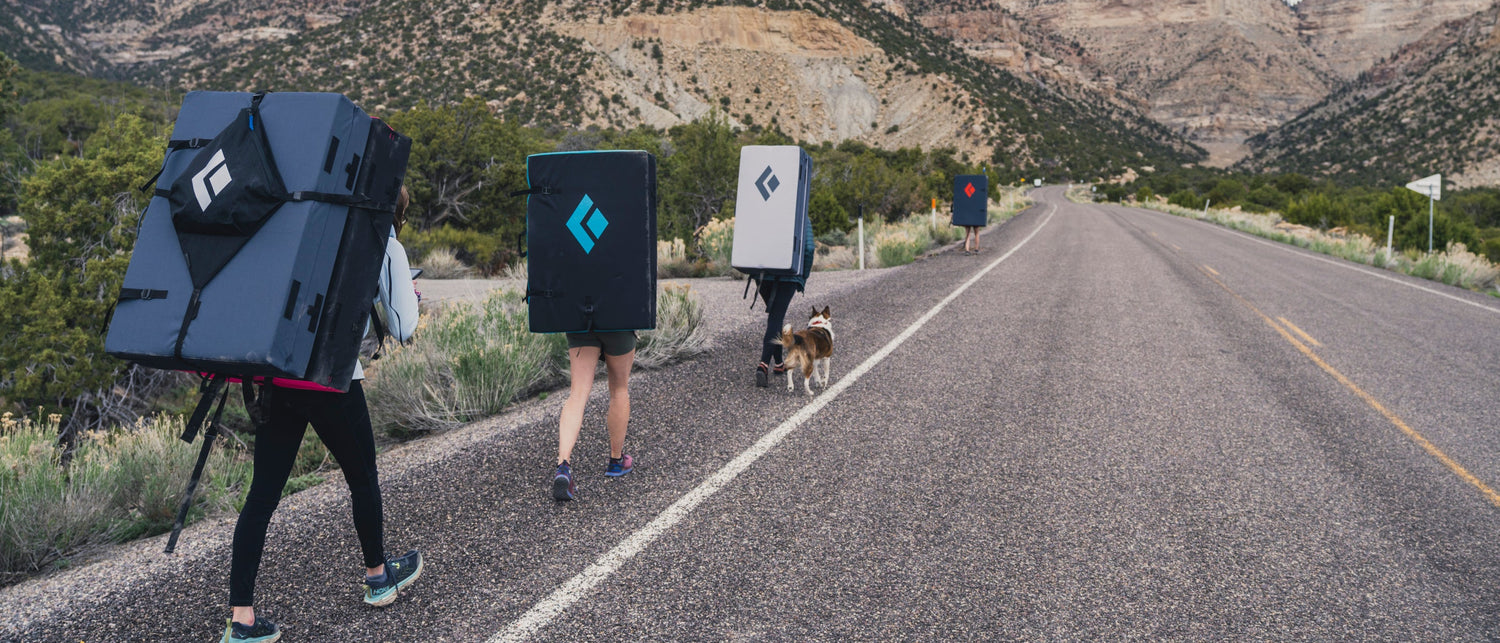
FINAL CONSIDERATIONS
FINAL CONSIDERATIONS
Every climbing trip is different. Black Diamond employees have taken many climbing trips, and they have tried and true gear they always bring, but that is a system they have refined on their own over years of climbing trips. Their suggestions offer a great starting point to perfect your own gear system while travelling.
Now it’s time to hit the road and get sending—we’ll see you out there.
KEY TAKEAWAYS
KEY TAKEAWAYS
- Packs & Organization: Choosing the right climbing pack is essential; recommendations include the Creek 50 for all-around use, Crag 40 for sport trips, Capsule 20 or Stone 45 for bouldering, and the Blitz series for alpine routes.
- Essential Gear: Core items include rope, harness, helmet, shoes, chalk, and protection (like C4 Camalots, Z4 offsets, or ultralight cams). Employees highlight bringing versatile headlamps, trekking poles, and multiple shoe types for different climbs.
- Clothing & Layers: Bring apparel that is great for a variety of conditions. The bare minimum would be a sun hoody, climbing pants, and some sort of lightweight down or synthetic insulation. Depending on the location, heavier insulation may be needed or a shell like the Fineline for rainy rest days.
- What to Leave Behind: Avoid overpacking—bring only necessary draws and ropes for sport climbing, a tailored rack for trad routes, and a limited number of crash pads for bouldering. The focus is on balancing preparedness with packing efficiency.
- Refining Your Packing List: Every climbing trip is different. Black Diamond employees emphasize tailoring your gear to the specific trip and climbing style, using their recommendations as a starting point and adjusting quantities or gear types based on location, duration, and personal needs.
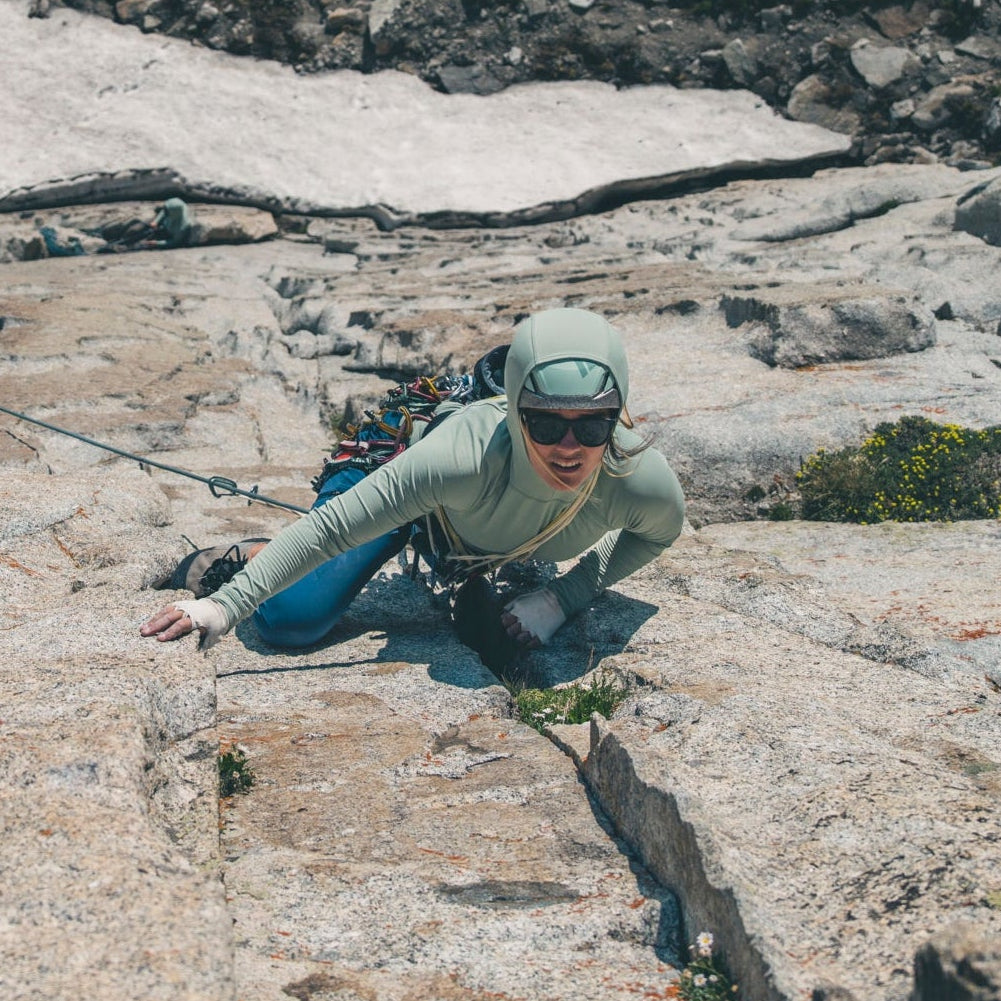
ABOUT THE AUTHOR
Molly is Black Diamond Equipment’s copywriter. Her expertise in outdoor apparel and equipment comes from a decade-long love affair with backcountry splitboarding and climbing. She likes low-angle powder laps on high-avy days and sending long desert splitters.
